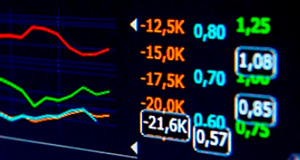 Having seen European stock markets post some decent August gains, investor attention is now set to return to the potential next steps of central bank policymakers in the coming days and weeks, in the wake of some rather disappointing economic reports from both sides of the Atlantic in the past few days.
Having seen European stock markets post some decent August gains, investor attention is now set to return to the potential next steps of central bank policymakers in the coming days and weeks, in the wake of some rather disappointing economic reports from both sides of the Atlantic in the past few days.
This concern about future central bank policy may well have been the reason why the S&P500 slipped back to post its first negative month since January, though a slide in oil prices didn’t exactly help either.
Several Fed policymakers in the last few days have been keen to talk up the prospect of a possible tightening of monetary policy, when the Fed gets set to meet in just less than three weeks’ time.
This attempt to shift market expectations has seen the US dollar rebound somewhat in the last few days; however markets remain less than convinced the Fed will be able to act at a time when the economic data in Japan and Europe has also been less than solid, and inflationary pressure remains remarkably benign.
A softening of economic data in Europe in terms of a disappointing German IFO survey and weaker than expected inflation has prompted expectations that the ECB could well ease further when it meets later next week. Japanese policymakers also haven’t been shy of insisting that they have yet to reach the limits of what they can do, both of which could well push the US dollar higher across the board, which in turn could make it that much harder for the Fed to push rates higher.
Earlier this morning the latest Japanese manufacturing PMI number for August showed a slight improvement from July’s 49, coming in at 49.5, but still firmly in contraction territory.
The latest Chinese manufacturing PMI surveys for August did offer up some optimism even though the Caixin measure slowed to 50, down from 50.6. The official measure improved slightly to 50.4, almost a two year high, which is encouraging after a fashion, though if 50.4 is a cause for celebration then it merely goes to show that investors are clutching at straws. On the flip side official services number slowed slightly to 53.5 from 53.9.
In terms of what can be expected next week from the ECB the latest manufacturing PMI’s for August from Spain, Italy, France and Germany could well set the tone of how the ECB reacts when it meets next week along with the publication of a new set of inflation and growth forecasts. All four surveys are expected to come in weaker from their July numbers at 50.8, 51.3, 48.5 and 53.6 respectively.
The latest UK manufacturing survey could well assuage some concerns about the health of the UK economy in the wake of the recent Brexit vote, if as expected we get a rebound from July’s disappointing 48.2 reading, with an August rebound to 49.1 expected.
Yesterday the latest Chicago PMI saw a sharp slowdown in August to 51.2 from 55.8 in July, which is a little worrying given that manufacturing had been showing some signs of rebounding after spending a lot of the last 12 months in contraction.
More importantly inflation pressures showed further signs of slowing, which could be important in the context of the current debate about a possible Fed rate rise later this month, despite yesterday’s fairly robust ADP jobs report.
If today’s ISM manufacturing report for August displays similar weakness then it will become much less likely that the Fed will be able to hike rates even if they feel compelled to at a time when inflation continues to show little signs of getting anywhere near their 2% target.
Expectations for ISM manufacturing are for a slowdown to 52 from 52.6; though given the weakness in the Chicago PMI number yesterday it could well come in weaker than that, with prices paid expected to weaken slightly from 55 to 54.5.
EURUSD – have so far managed to hold above the support near the 1.1120 area, and this needs to hold for a move back through the 1.1250 area towards 1.1400 and June highs. A move below 1.1120 retargets the low 1.1000’s.
GBPUSD – continues to hold above the 1.3020 area and while it does so the risk remains for a move back towards last week’s high near 1.3300. Below 1.3000 retargets the lows at 1.2800. We need to push through 1.3300 and trend line resistance there to target 1.3500.
EURGBP – continues to track lower moving briefly below the 0.8490 area, raising the prospect of a move towards 0.8400. A move back through 0.8620 is needed to retarget the highs just above the 0.8700 area.
USDJPY – finding resistance just above the 103.50 area and could overspill towards 104.00, but that doesn’t change the prospect that we remain vulnerable to a retest of the lows around the 99.50 area. The bias remains for a move towards the recent lows at 98.95, and potentially lower towards 95.00, and levels last seen in June 2013.












